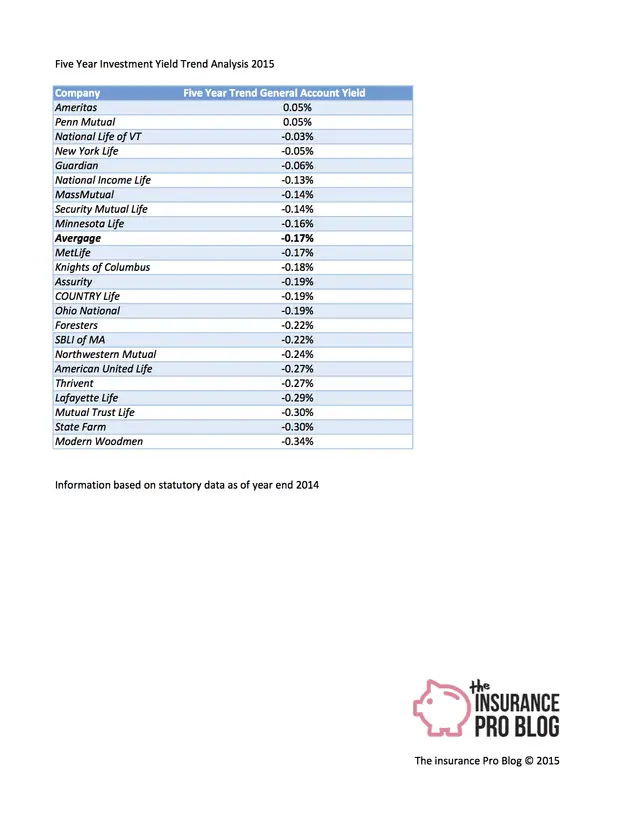A life insurance company's yield on assets is a great metric to watch with respect to inferences concerning the cash performance within policies. Since life insurers use the yield achieved on managed assets to support policy benefits this statistic is of extreme importance to us especially when we focus on cash accumulation values within a life insurance policy.
We specifically look at the overall trend for this statistic to see if an insurer is improving or regressing in terms of yield on assets achieved.
Trend this Year Similar to Last Year
Just like last year the general trend is negative and this is not a surprising result. Suppressed interest rates mean life insurers are faced with maturing debt investments that require new purchases with lower interest rates.
It is important to note, that a declining result does not necessarily indicate problems for an insurer as extremely high returns in former years might cause a trend moving forward that comes back to more normal results.
Methodology
The methodology is similar to last year and you can read more about that here. There was one small change we made to the sample of life insurance companies.
Since Ameritas consolidated its insurance companies, we’ve removed Union Central from the list of carriers as those assets are now part of Ameritas Life. And we added American United Life (One America) to this lineup for this year.
Results
Results for this year are as follows:
The average remains the same this year. Ameritas, Guardian, and New York Life have some of the biggest improvements year over year (though Ameritas is hard to gauge since the company combined assets with other subsidiary companies).
MetLife and MassMutual experienced some of the biggest declines. Neither is a major concern.
We’ve discussed MetLife’s low yield on assets (relatively) and their probable comfort with this given their massive asset pool–they simply don’t need a huge yield to meet obligations. MassMutual’s interest margin improved pretty substantially in 2014, so the declining yield trend (while not ultimately favorable) causes less pause.


